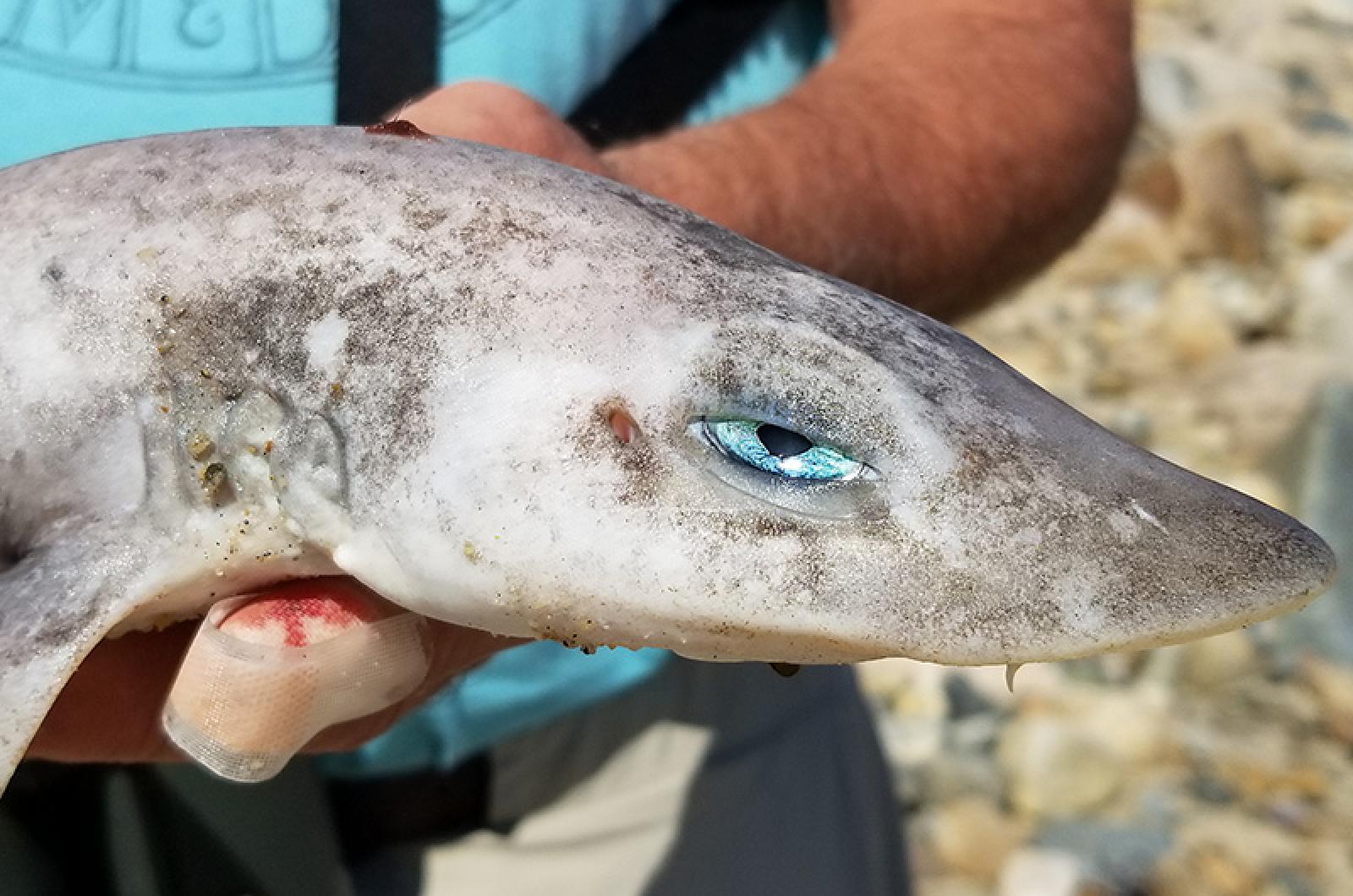This dog had already had its day.
A dead dogfish shark was recently found on Squibnocket Beach by Jim Suozzo and Ann Ellery. They emailed a photo looking for an identification of a small, good-looking shark with piercing blue eyes.
For that, I needed to see a man about a dog. The angler in my life identified the shark as a smooth dogfish, Mustelus canis (weasel dog), known by many other names, including the dusky smooth hound, nurse shark and hound shark.
Smooth dogfish are found all along the east coast and are relatively common in our waters, though they don’t extend their territory much farther north than Massachusetts. They do, however, migrate along the coast, coming north in the spring and heading south in the fall. This lifestyle makes them oceanodromous (living and migrating in the ocean) and their penchant for dwelling on the bottom of the sea is called demersal.
In shark populations, they are second to spiny dogfish. These two species can be differentiated by spines located on the dorsal fins of the spiny dogfish — an easy-to-remember identifier — which are not found on the fins of the smooth dogfish. The smooth dogfish sports an anal fin that the spiny dogfish lacks. Both species are viviparous, meaning that they give birth to live young after an approximate 10-month gestation period with a yolk-sac placenta. Dogfish are slow growers and slow breeders, taking almost five years for females to reach maturity, and have a low number of offspring in each litter.
Three to four feet is the largest the smooth dogfish usually grows, and it distinguishes itself from other sharks in an important way. Though most sharks avoid people, sometimes encounters can be dangerous. Not so for the smooth dogfish shark. It will never harm a human. In fact, it can’t, due to the structure, size and function of its choppers.
Consider those gnashing teeth: it is not a dog-eat-dog world out there for this shark. The smooth dogfish doesn’t dine on other sharks. Instead, it uses its flat, grinding teeth to crush crustaceans, bivalves and other bottom-dwelling delicacies. So, its bark must be worse than its gumming-like bite. And its teeth can replace themselves every 10 to 12 days as they are worn down from the constant crunching.
In a Buzzard’s Bay study of the smooth dogfishes’ diet, scientists noted its craving for a certain crustacean. Calling it the “most relentless enemy of the lobster,” their analysis suggested that 10,000 smooth dogfish could consume 60,000 lobsters yearly. And that wouldn’t be all — 200,000 crabs would also be consumed by those hungry dogs. Clams are also on the menu.
While this is all food for thought, the smooth dogfish, while edible, has not caught the fancy of many chefs or consumers. Across the pond in Europe, it is eaten in traditional fish and chips, due to the decline of cod. As dogfish is plentiful, it might be a good alternative here also, though some treatment of the fish is necessary before cooking.
I guess if it tastes good, it might be easy to convince consumers to partake, though the name dogfish might be off-putting. Savvy and sustainable fishmongers have already started to promote this plentiful species with a name change to Cape shark for rebranding and remarketing. If efforts are successful, this dog might just become man’s (and other fish’s) best friend.
Suzan Bellincampi is director of the Felix Neck Wildlife Sanctuary in Edgartown, and author of Martha’s Vineyard: A Field Guide to Island Nature and The Nature of Martha’s Vineyard.




Comments
Comment policy »